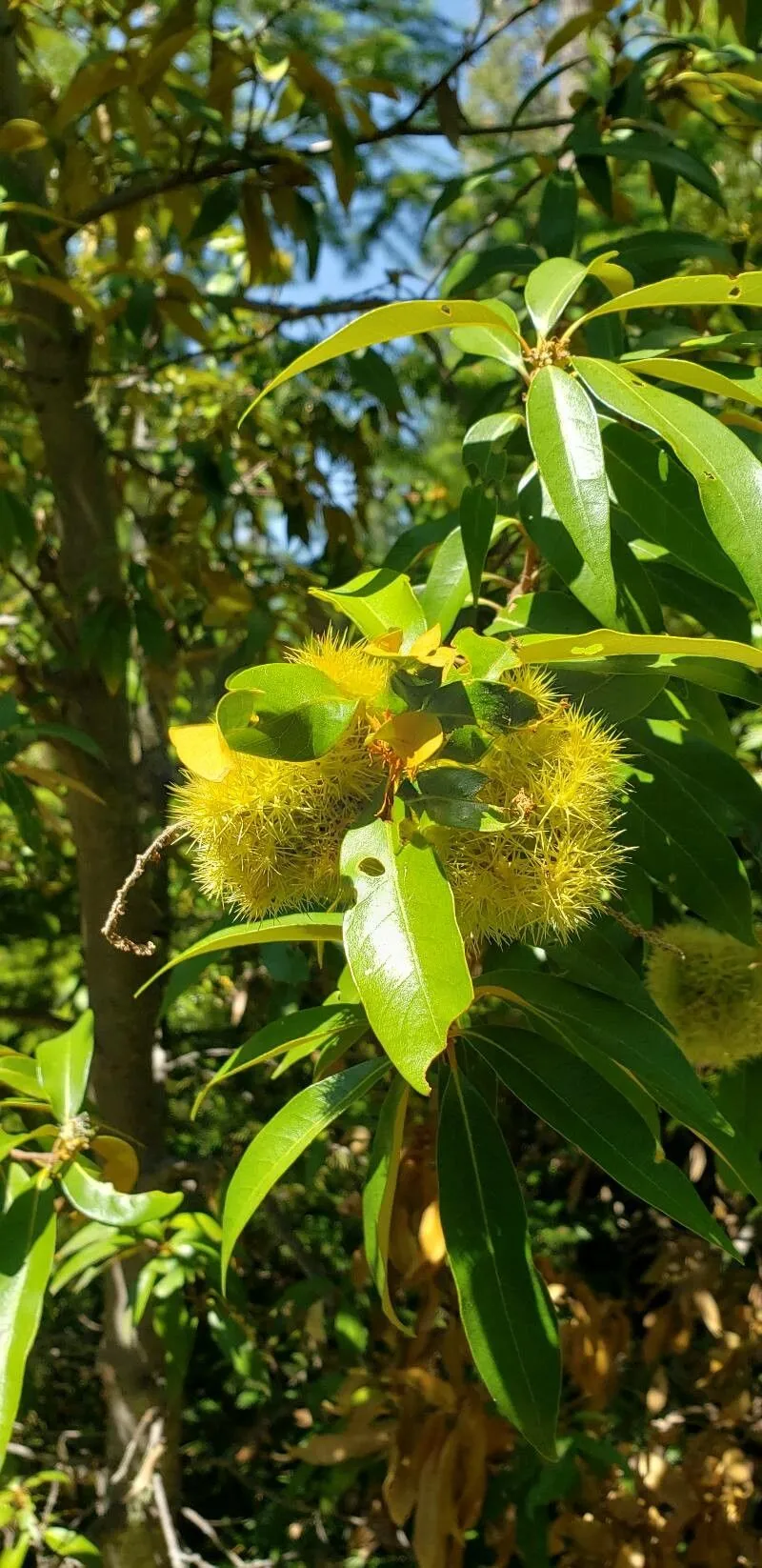
Author: (Douglas ex Hook.) Hjelmq.
Bibliography: Bot. Not. Suppl. 2, 1: 117 (1948)
Year: 1948
Status: accepted
Rank: species
Genus: Chrysolepis
Vegetable: Unknown
Observations: W. U.S.A.
The Golden-chestnut, scientifically known as Chrysolepis chrysophylla, is a notable species within the Fagaceae family. This remarkable tree is native to the western United States, where it thrives in its natural habitat. First described by Douglas ex Hook and later classified by Hjelmq in 1948, the Golden-chestnut has since garnered attention for its distinctive characteristics and contributions to the ecosystem.
Chrysolepis chrysophylla features an impressive stature, often growing to substantial heights and developing a robust trunk. The leaves of this tree are particularly striking, showcasing a vibrant golden hue on their undersides, which is indicative of its common name, Golden-chestnut. This unique coloration is not merely for aesthetic appeal but also plays a role in the plant’s adaptation to its environment, assisting in the reflection of sunlight and protection from harsh elements.
The Golden-chestnut produces seeds encased in a spiny burr, which protects the nut until it matures. These nuts are not only an important food source for wildlife but have also been valued by indigenous cultures for their nutritional benefits. The tree’s ability to produce these nutrient-rich seeds adds considerable ecological value, fostering biodiversity within its native range.
Ecologically, Chrysolepis chrysophylla plays a critical role in its environment. It contributes to soil stabilization, thereby preventing erosion, and provides habitat and food for various species. The tree’s extensive root system supports the health of forest ecosystems by enhancing soil fertility and promoting the growth of other plant species.
In terms of conservation, understanding the distribution and ecological significance of the Golden-chestnut is crucial. As human activities and climate change continue to impact natural habitats, the preservation of such species becomes increasingly important. Efforts to protect Chrysolepis chrysophylla and its habitat can ensure the long-term sustainability of these forested regions.
In summary, Chrysolepis chrysophylla, or the Golden-chestnut, is a vital component of the western U.S. flora. Its unique characteristics, ecological benefits, and historical significance highlight the importance of conservation efforts to preserve this remarkable species. Through continued research and environmental stewardship, we can ensure that the Golden-chestnut remains a thriving part of our natural world.
Eng: giant chinquapin, giant golden chinkapin, golden chinkapin, golden-chestnut, western chinkapin
En: Golden-chestnut, Giant chinquapin, Giant golden chinkapin, Golden chinkapin, Western Chinkapin
Lb: Goldkäschtebam
Taken Jul 1, 1995 by Daniel Barthelemy (cc-by-nc)
Taken Sep 2, 2015 by EOL − naturalist eve (cc-by-nc)
Taken May 29, 2011 by EOL − Zoya Akulova (cc-by-nc)
Taken Jul 31, 2014 by EOL − Zoya Akulova (cc-by-nc)
Taken Oct 14, 2013 by EOL − Damon Tighe (cc-by-nc)
Taken Aug 14, 2022 by Nicole Nicole (cc-by-sa)
Taken Jun 12, 2010 by EOL − Miguel Vieira (cc-by)
Taken Jan 1, 1900 by EOL − Niehaus, T.F. (cc-by-nc-sa)
Taken Jan 1, 1900 by EOL − Howard, R.A. (cc-by-nc-sa)
Taken Jan 27, 2015 by EOL − Gerald and Buff Corsi (cc-by-nc-sa)
Taken Jan 27, 2015 by EOL − Gerald and Buff Corsi (cc-by-nc-sa)
© copyright of the Board of Trustees of the Royal Botanic Gardens, Kew.
Family: Myrtaceae Author: (F.Muell.) K.D.Hill & L.A.S.Johnson Bibliography: Telopea 6: 402 (1995) Year: 1995 Status:…
Family: Rubiaceae Author: Pierre ex A.Froehner Bibliography: Notizbl. Bot. Gart. Berlin-Dahlem 1: 237 (1897) Year:…
Family: Sapindaceae Author: Koidz. Bibliography: J. Coll. Sci. Imp. Univ. Tokyo 32(1): 38 (1911) Year:…
Family: Asteraceae Author: A.Gray Bibliography: Pacif. Railr. Rep.: 107 (1857) Year: 1857 Status: accepted Rank:…
Family: Fabaceae Author: Medik. Bibliography: Vorles. Churpfälz. Phys.-Ökon. Ges. 2: 398 (1787) Year: 1787 Status:…
Family: Aspleniaceae Author: (Cav.) Alston Bibliography: Bull. Misc. Inform. Kew 1932: 309 (1932) Year: 1932…